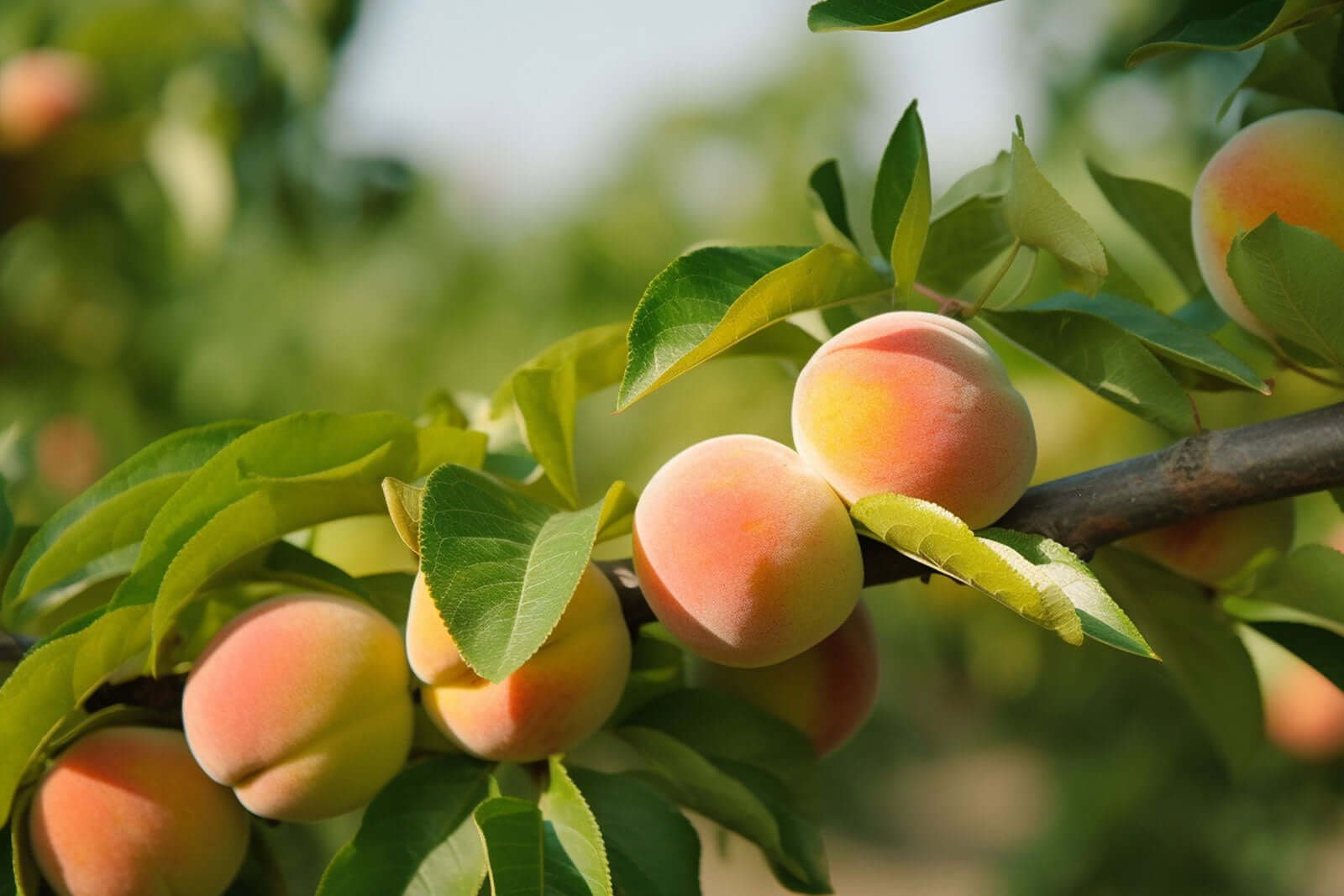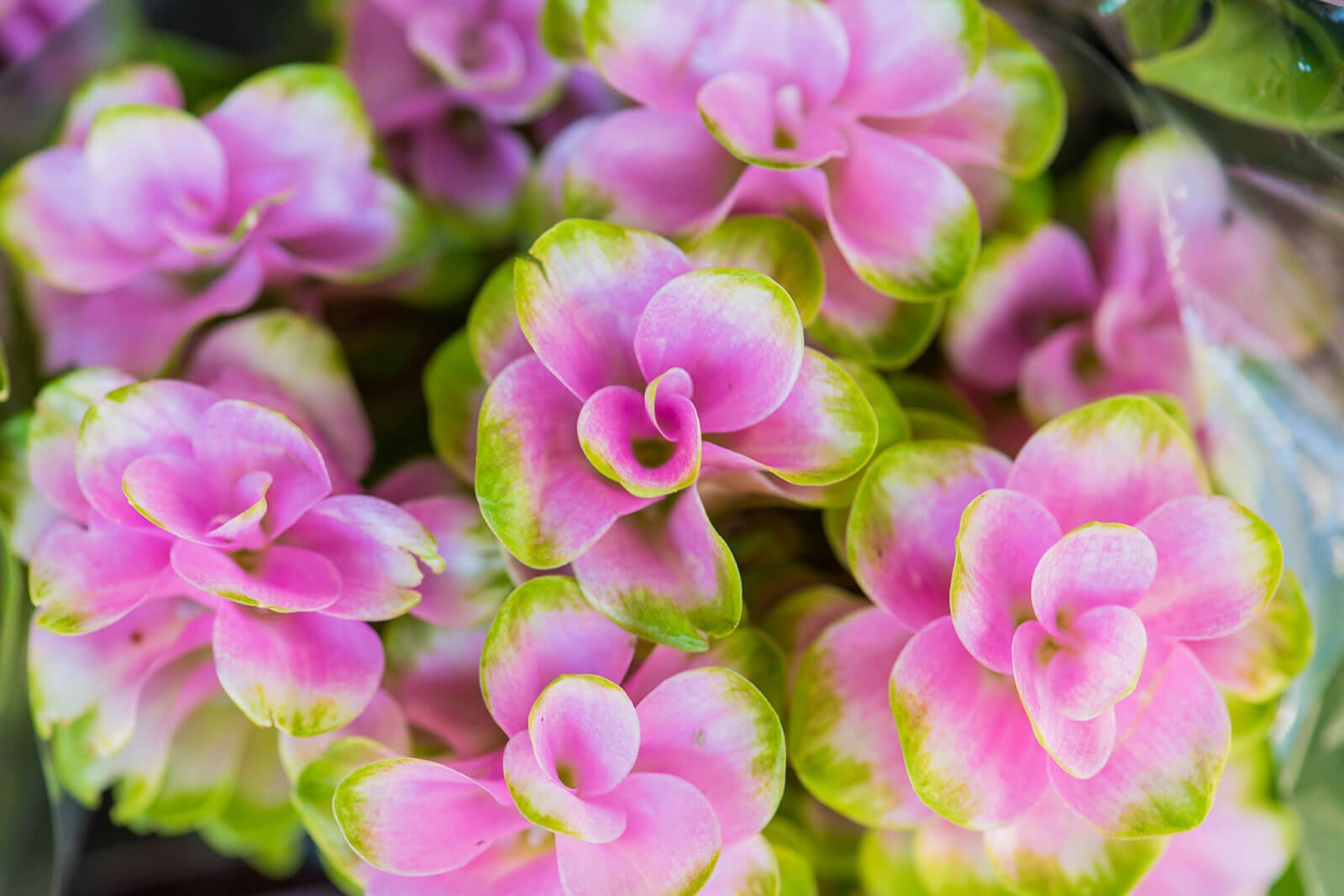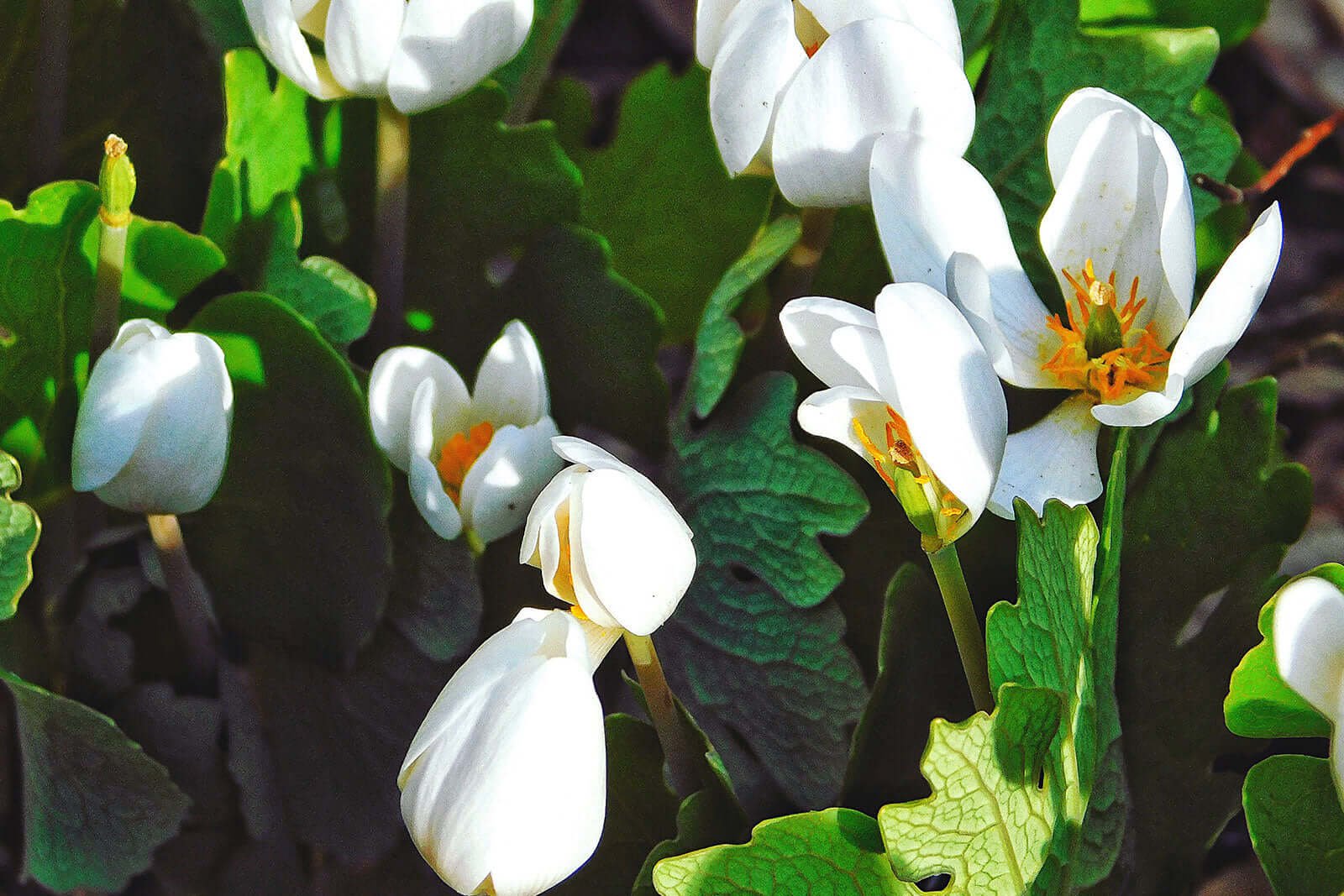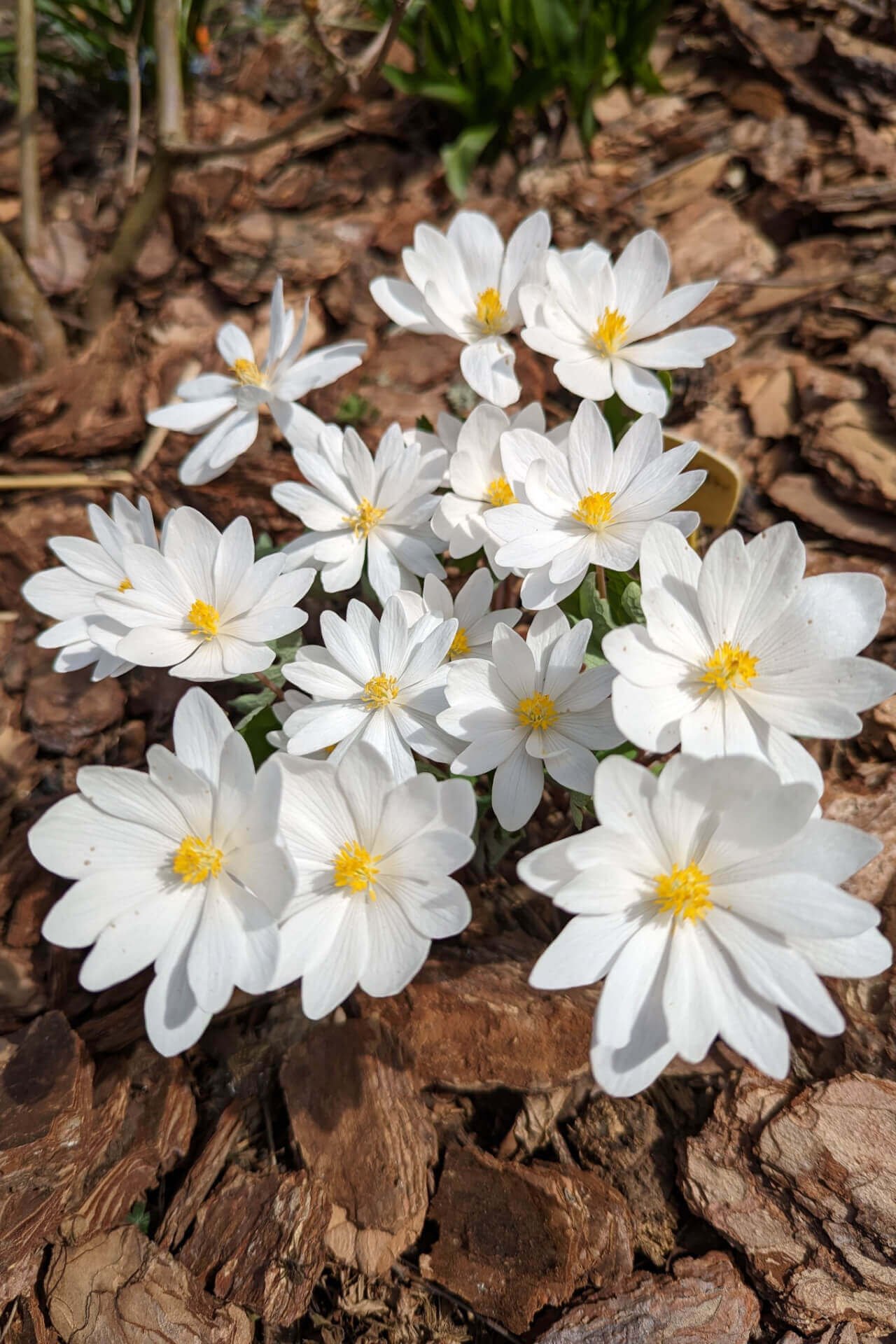As spring approaches and gardeners eagerly anticipate the burst of colors in their landscapes, many consider planting bloodroot (Sanguinaria canadensis). Known for its striking white flowers and distinctive lobed leaves, bloodroot is a native woodland plant that thrives in shady, moist environments.
If you're considering planting bloodroots in your garden, here's a comprehensive guide to planting and caring for bloodroots to ensure their healthy growth and vibrant blossoms.
Understanding Bloodroot
Bloodroot, named for the reddish sap found in its roots, is a charming addition to woodland gardens, shaded borders, or naturalized areas. Its flowers typically emerge in early spring, preceding the unfurling of its distinctive foliage.
This plant prefers rich, well-drained soil and dappled shade, mimicking its natural habitat in North American forests.
When properly cared for, bloodroot can thrive for years, providing a delightful display of delicate blooms year after year.
The Preparation Process
Taking these initial steps before planting bloodroot sets the stage for this enchanting perennial's successful establishment and flourishing growth. Here's what you should consider before planting bloodroot.
Choose the Right Location
Before planting bloodroot, it's essential to select an appropriate location that mimics its native habitat. Choose a spot in your garden that receives partial to full shade, ideally under the canopy of trees or near a north-facing wall. Bloodroot is sensitive to direct sunlight, so avoid planting it in areas that receive intense afternoon sun, as this can scorch its delicate leaves.
Prepare the Soil
Bloodroot thrives in moist, well-drained soil with a slightly acidic to neutral pH level. Before planting, amend the soil with organic matter such as compost or well-rotted manure to improve its fertility and drainage. Ensure the soil is loose and friable, allowing the plant's roots to penetrate easily.
Planting Bloodroot: Step-by-Step Process
Spring is the optimal time to plant bloodroot, preferably as soon as the soil is workable and temperatures begin to warm. Follow these steps for successful planting.
Step 1: Dig the Hole
When preparing to plant bloodroot, start digging a hole slightly larger than the plant's root ball. This extra space allows the roots to spread out comfortably as they grow. Ensure the hole is deep enough to accommodate the roots without crowding or bending.
A good rule of thumb is to make the hole twice as wide as the root ball and deep enough so the plant's crown sits below the surrounding soil surface.
Step 2: Position the Plant
After digging the hole, gently place the bloodroot plant in the center, ensuring that the crown, where the roots meet the stems, is positioned at ground level. This ensures that the plant is not planted too deeply, which can lead to issues with root rot or suffocation. Take care to spread the roots evenly in the hole, avoiding any twisting or bending that could damage them.
When planting bareroot plants, position them similarly.
Step 3: Backfill
Once the plant is properly positioned, backfill the hole with soil, gently pressing it around the roots to eliminate air pockets. Ensure that the soil is firmly packed but not compacted, which can hinder root growth. Water the newly planted bloodroot thoroughly to settle the soil around the roots and provide hydration to the plant.
Step 4: Mulch
To further promote the bloodroot plant's health and vitality, apply a layer of organic mulch around the base. This helps conserve moisture in the soil, suppress weeds, and regulate soil temperature.
Choose mulch such as shredded bark or leaf mold and apply it evenly, leaving a small gap between it and the plant's stems to prevent rot. To maintain its effectiveness, refresh the mulch as needed throughout the growing season.
How To Take Care of Bloodroot Plants
Once planted, the bloodroot requires minimal maintenance to thrive. Follow these care tips to ensure its health and vitality.
Watering
Bloodroot thrives in moist soil, particularly during dry periods or prolonged spells without rain. However, striking a balance is crucial, as overwatering can lead to root rot and other issues.
Aim to keep the soil evenly moist by watering deeply but infrequently. Allow the soil to dry out slightly between waterings to prevent waterlogged conditions.
When watering, aim for the base of the plant to deliver moisture directly to the roots.
Fertilizing
While bloodroot generally doesn't demand regular fertilization, a balanced, slow-release fertilizer can boost its growth, especially in the early spring when plants are actively growing.
Choose a fertilizer with equal parts nitrogen, phosphorus, and potassium, and apply it sparingly around the base of the plant. Avoid over-fertilizing, as this can lead to excessive foliage growth at the expense of flowering.
Pruning
To maintain the appearance and health of bloodroot plants, removing any dead or yellowing foliage as it appears regularly is essential. This improves the plant's aesthetic appeal and helps prevent the spread of disease and pests.
Use clean, sharp pruners to make precise cuts, removing the affected foliage at its base. Additionally, removing spent flowers can encourage prolonged blooming and prevent the plant from expending energy on seed production.
Division
Over time, mature bloodroot plants may become overcrowded, reducing vigor and flowering.
Consider dividing the plants every few years to rejuvenate them and promote vigorous growth. Early spring is the ideal time for division as plants emerge from dormancy.
Carefully dig up the plant, not damaging the delicate rhizomes. Gently separate the rhizomes, ensuring each division has several healthy growth points. Replant the divisions in prepared soil, spacing them adequately to allow for future growth and expansion.
Regular division can help maintain the health and vitality of bloodroot plants while also providing an opportunity to propagate new specimens for your garden or to share with others.
Start Planting Bloodroots Today
Bloodroot is a captivating addition to any spring garden with its exquisite flowers and distinctive foliage.
By following these planting and care guidelines, you can ensure your bloodroot plants thrive and provide years of beauty in your landscape. From choosing the right location to providing proper maintenance, nurturing bloodroot is a rewarding endeavor that will delight gardeners for years to come.
Companion Plants for Bloodroot
Start planting bloodroots in your garden today!
Read more

Ready to grow your delicious peaches? Planting peach trees in your garden requires the right techniques and care. It's not an easy task to do, especially if you're a beginner. If you're new to plan...

As the spring sun begins to warm the earth, planting pink primrose breathes life back into outdoor spaces. Among the array of colorful blooms that grace the garden beds, these pink flowers stand ou...



